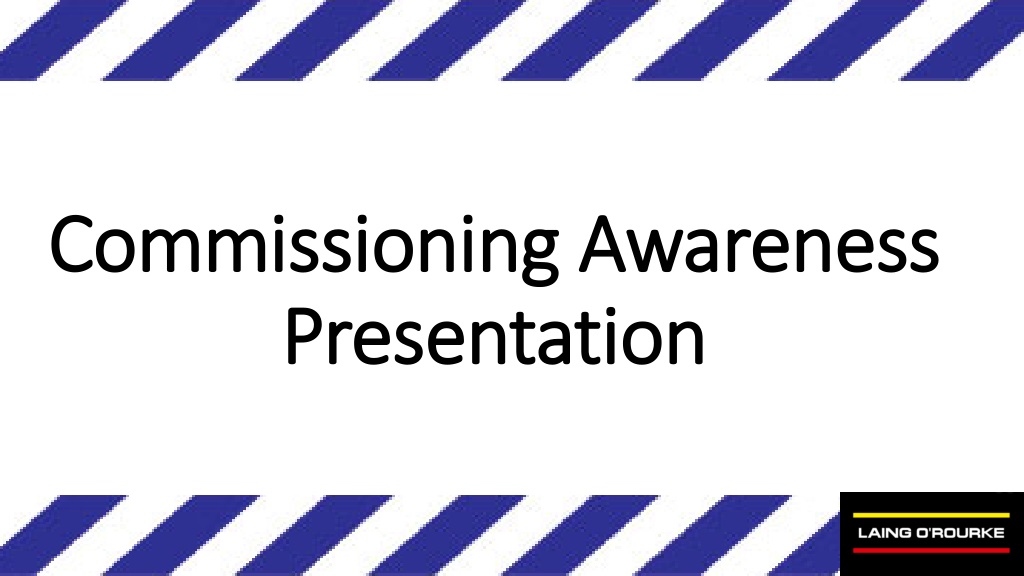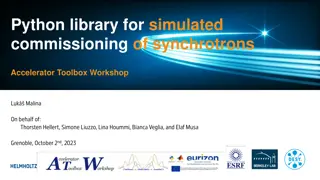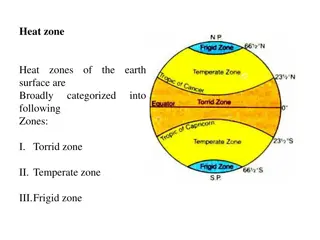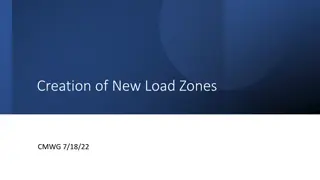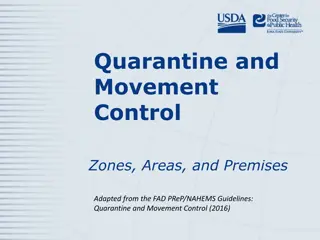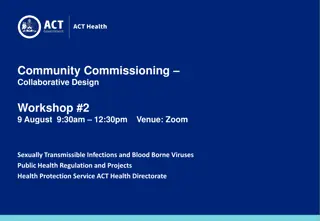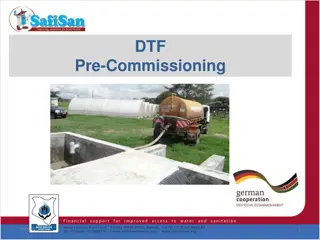Understanding Commissioning Zones and Safety Procedures
In the commissioning phase of a project, it is crucial to establish clear commissioning zones to distinguish between construction and commissioning areas. Blue and white flagging, boundary isolations, and permits play key roles in ensuring the safety and controlled energization of circuits and equipment. Stay informed about commissioning processes and safety measures to protect everyone on site.
Download Presentation

Please find below an Image/Link to download the presentation.
The content on the website is provided AS IS for your information and personal use only. It may not be sold, licensed, or shared on other websites without obtaining consent from the author. Download presentation by click this link. If you encounter any issues during the download, it is possible that the publisher has removed the file from their server.
E N D
Presentation Transcript
Commissioning Awareness Commissioning Awareness Presentation Presentation
Commissioning Phase of the project Commissioning Phase of the project As the project enters commissioning phase it is important that everyone understands the risks and procedures around commissioning to ensure the safety of everyone on site. Commissioning is the introduction of an energy source (Electricity, Pressure, Hydraulic) to test new and existing installations. Once the installation enters commissioning phase it must always be treated as live.
What is a Commissioning Zone ? What is a Commissioning Zone ? A commissioning zone is the area established to clearly delineate between the construction and the commissioning area. New Commissioning zones and areas will be displayed on the site pre start maps and communicated to work crews during prestart meetings.
How is a Commissioning zone Identified ? How is a Commissioning zone Identified ? Blue and White flagging is used on the project to identify commissioning areas. DANGER COMMISSIONING IN PROGRESS signs are also uses on the project to warn work crews of areas of commissioning activities and equipment
Boundary Isolations Boundary Isolations Boundary isolations are used to control power and isolate down stream construction circuits from commissioning circuits, Boundary locks are BLUE LOCKS placed by the permit team to ensure control of energy. Boundary isolations can only be removed with a Permit to Energise (PTE) and accompanying Notice of Energisaiton (NoE) Commissioning Zone Construction Zone
Notice of Energisation ( Notice of Energisation (NoE The Notice of Energisation (NoE) is the notice distributed to site personnel of an upcoming energisation. This notice is read out at prestart and is placed on the site map boards along with notice of energisation sign. The notice is distributed sitewide 48 Hours or 2 Prestarts prior to energisation and will be read out at all prestarts until energisation. The NoE highlights what circuits or equipment is to be energised and what date the energisation will occur. A NoE is required for all HV and LV energisations on the project. NoE) )
Permit to Energise (PTE) Permit to Energise (PTE) PTE is the permit required to remove boundary isolations and energise the circuits and equipment mentioned within the permit, Boundary isolations will be required down stream for incomplete circuits in order to safely control energy and maintain physical control between the commissioning zone and the Construction zone. The PTE can not be released until the NoE has been distributed for 2 Prestarts or 48 Hours.
Information Bulletin Information Bulletin Information bulletins are used on the project to communicate commissioning activities that would not require a NoE e.g. 24 Volt system testing. Information bulletins must be distributed at least 24 hours ahead of a commissioning activity and must be communicated at the next available prestart.
Permit to Work (PTW) Permit to Work (PTW) A permit to work is required to isolate any energised system on the project to allow for works to be carried out. The worker must read and understand the permit, sign onto the relevant section within the permit, as well as place their RED Personal Danger lock onto the relevant hasp or lock box mentioned in the permit.
Test for Dead Test for Dead Work crews carrying work under a PTW on an energised system are required to Test for Dead before commencing work. Testing ensures the equipment mentioned in the PTW is de-energised and safe to start work. This test can only be carried out by a licenced electrician. 1. Test on known live source 2. Test for Dead 3. Retest on known live source
HIGH VOLTAGE HIGH VOLTAGE High voltage is strictly authorised access only, permits or access permits are required before working in and around High Voltage. Always ask your supervisor if you are unsure.
Remember Remember Always pay attention to prestart and notices being read out. Notices and Bulletins will be displayed on the site map notice boards. Only use the correct flagging tape for your work areas. Be sure to read and understand any permit you may be signing on to. Always perform a test for dead Ask your supervisor if you are unsure before commencing work
